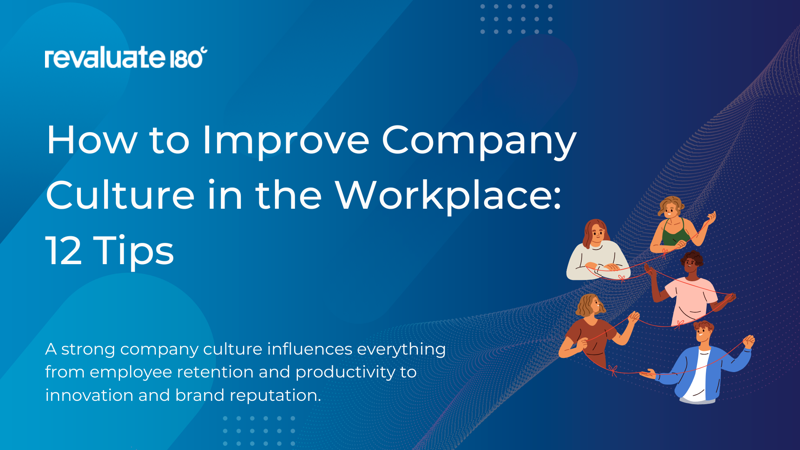A strong company culture is not just a peripheral concern but a strategic asset that directly affects the organization’s success, resilience, and ability to attract and retain top talent. Nearly 80% of employees are reported to consider company culture even before applying for a job. This raises the question: How can company culture be improved in the workplace?
Since high-performing organizations report 4x higher revenue growth when their culture perfectly aligns with their goals, it shapes everything from motivation and collaboration to retention and brand reputation. In this post, we’ve provided the proper focus and resources to help you transform culture from an afterthought into a competitive advantage.
Key Takeaways
Improving company culture isn’t just about gaining the strategic benefits, but also about aligning values, behaviors, and a system that makes your employees and everyone feel valued, heard, and respected. Our guide shares the top 12 actionable strategies to strengthen your workplace, whether in an office or remote setting.
Backed by effective data, practical examples, and proper DEI integration, you can learn how to cultivate a strong culture that drives engagement, retention, and most importantly, the success that lasts longer.
What is Company Culture?
Company culture is simply a set of shared beliefs, values, and behaviours that define “how we do things around here.” In other words, company culture is a social glue that influences your everyday work.
Culture encompasses everything from a company’s mission and core values to the way leadership and employees communicate and collaborate. A clear and healthy culture aligns employees around a shared purpose, accompanied by a set of expectations that fosters meaningful work and creates an environment where people feel they belong.
Conversely, a poor company culture can lead to a toxic workplace, marked by disengagement, high turnover, and, at its worst, legal and reputational risks.
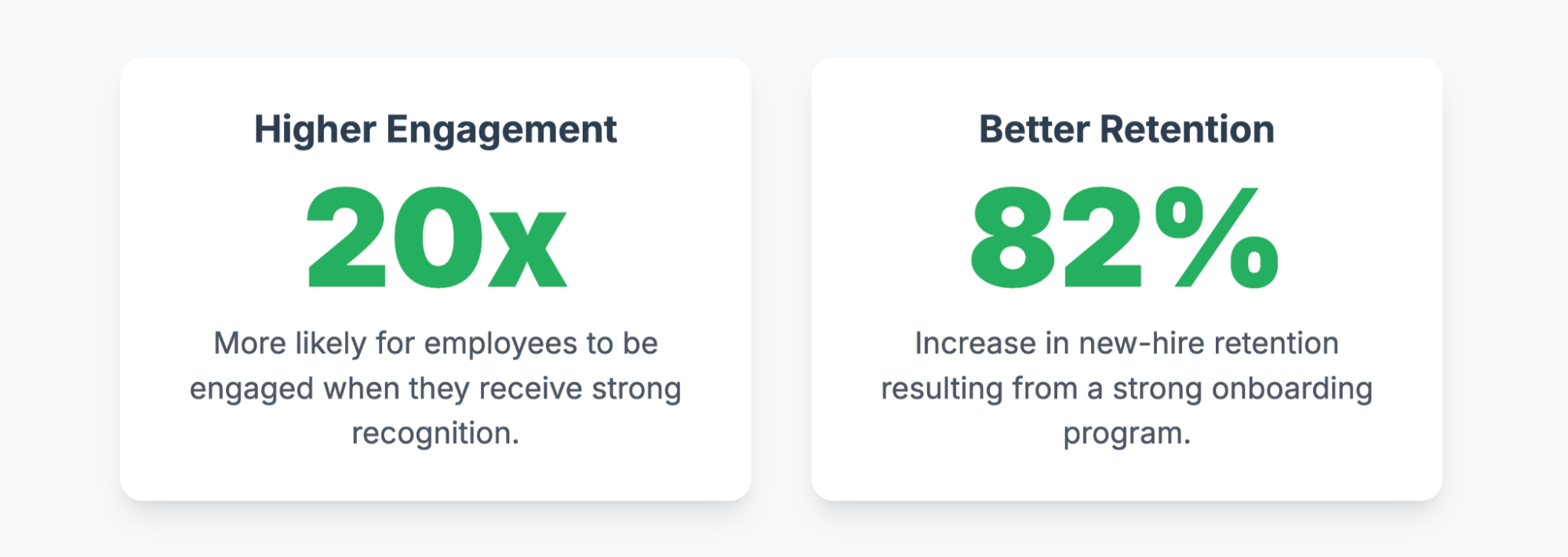
Common Factors That Shape Workplace Culture
Workplace culture is a complex ecosystem shaped by various intertwined factors. Leaders and managers influence culture through their behaviour and communication style. Understanding these fundamental elements is crucial for any company seeking to improve its cultural landscape. Let’s explore the key dimensions that significantly impact employee satisfaction.
Leadership Behaviour and Management Style
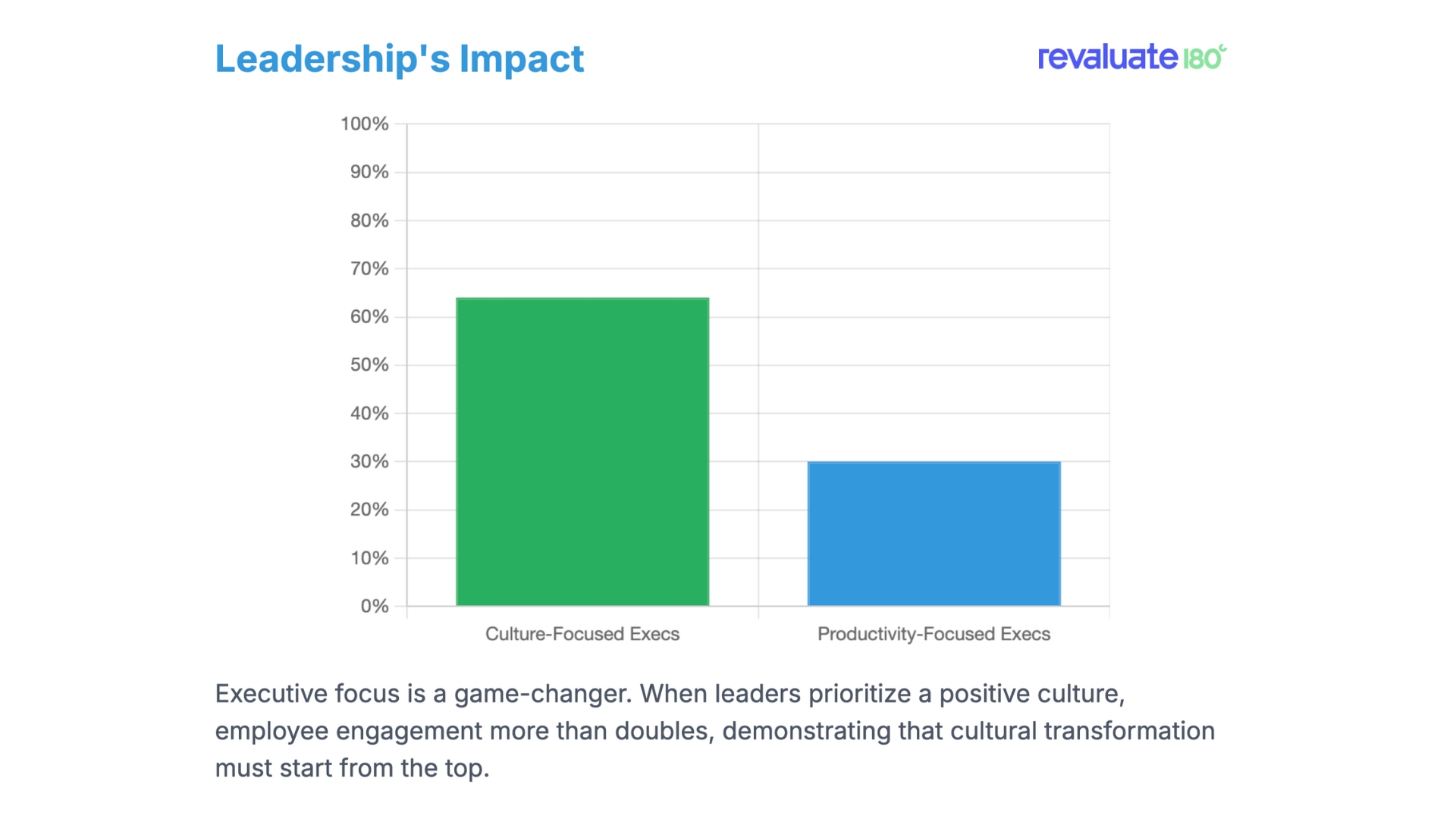
Leadership is an outsized asset. Managers leading projects set the tone by modeling values, recognizing their employees’ efforts, and creating unbreakable trust. According to a Gallup study, 70% of the variance in employee engagement comes down to the manager. This means that even if you have a strong culture vision, it can be undermined if your frontline supervisors are not aligned with it.
Communication and Transparency
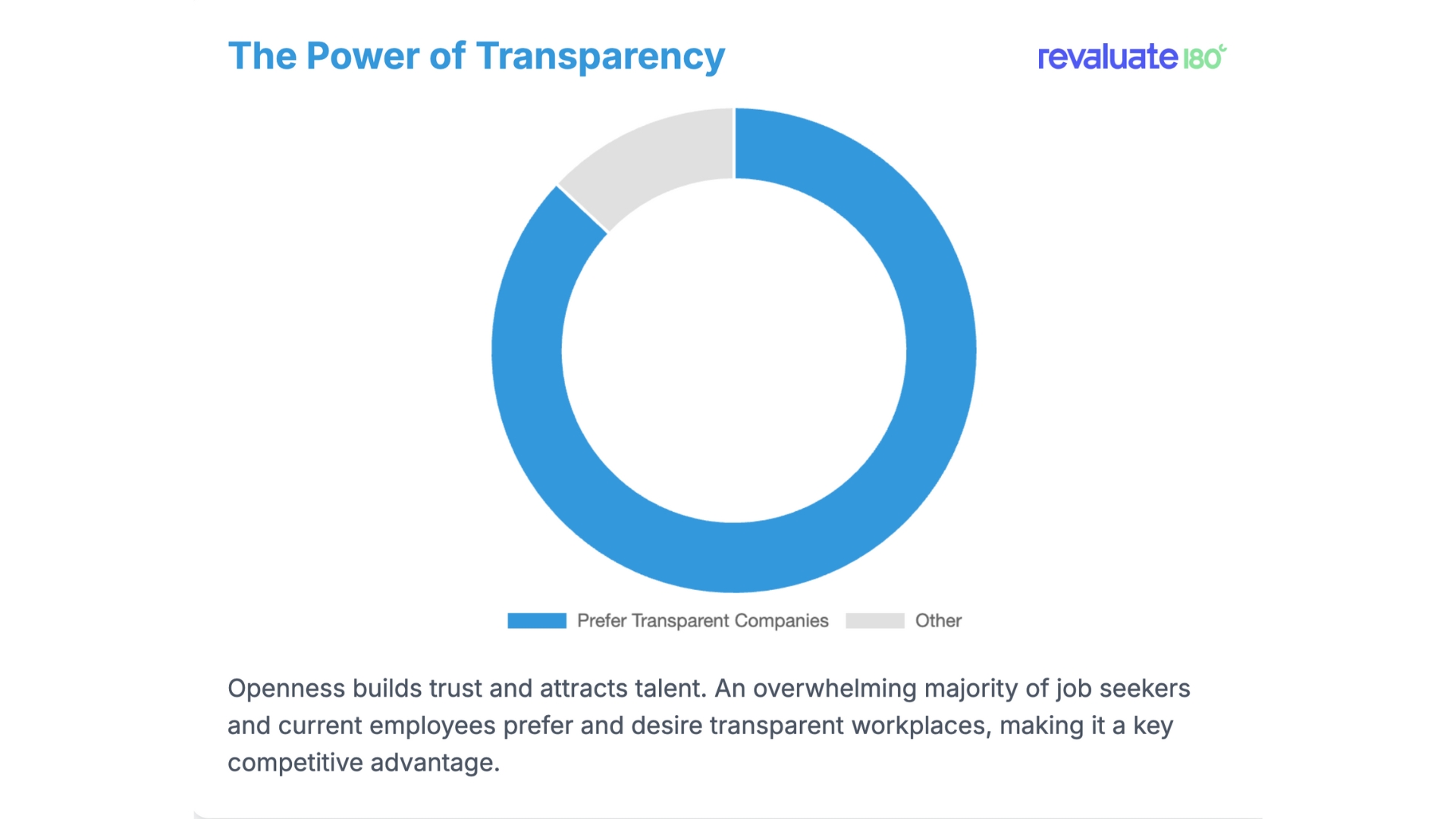
It’s no secret that open communication is a cornerstone of trust. When leadership shares information honestly, employees feel respected and valued regardless of the content. On the other hand, hiding information can lead to rumors and suspicion that risk undermining your company’s values.
Employees who see decisions made openly are more likely to feel safe speaking up at work. For example, sharing the company’s strategies and decisions helps employees align their work with organizational goals. This way, you can develop regular feedback loops that can flow information and narrative in both directions.
Shared Values and Mission Alignment
Clear and well-communicated values serve as the guiding principle for people’s motivation. When employees understand their company’s mission and values, they feel a stronger sense of purpose. As Josh Bersin explains, purpose and alignment inspire commitment.
Inclusion and Psychological Safety
Culture thrives when everyone feels they belong and speak up when needed. Psychological safety is the belief that everyone feels secure enough to take risks and voice their opinions without fear of retribution or punishment. Looking closely, you’ll see how Google’s famous Project Aristotle found that psychological safety was the top factor in team success, which is more critical than skill sets and resources. It’s like the comments you leave in your code to understand the flow.
Rewards, Recognition, and Growth Opportunities
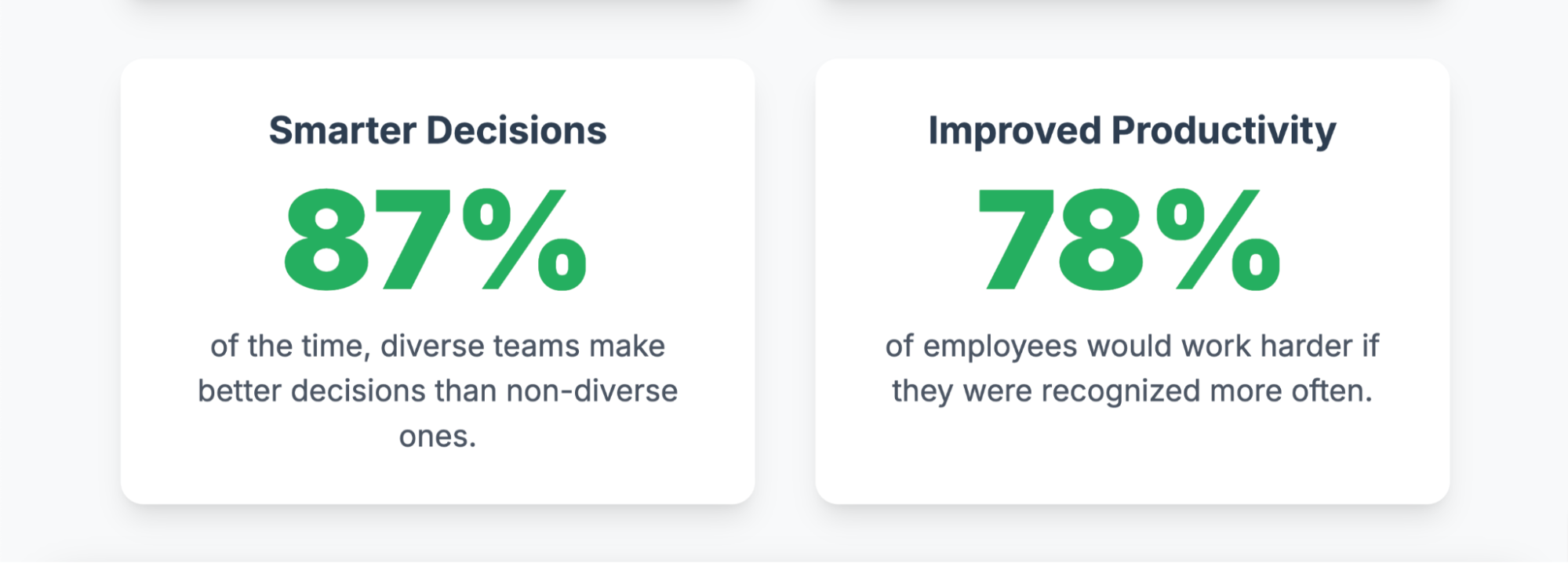
Efforts matter. And it’s our job to give respect where it’s due. Recognizing contributions and offering career development opportunities are two of the most effective ways to boost culture. Research shows that employees who receive high-quality recognition are 45% less likely to quit over time.

Unlock AI-Powered Hiring Analytics
Transform the way you hire with insights that create aligned, collaborative, and high-performing teams.
 Smarter Hiring Decisions
Smarter Hiring Decisions
 Reduce Expensive Turnover
Reduce Expensive Turnover
 AI-Driven Insights
AI-Driven Insights
 Optimize Team Performance
Optimize Team Performance

12 Ways to Improve Company Culture in the Workplace
Let’s explore 12 actionable steps leaders can implement to strengthen their workplace culture. These practices are effective in any office setting and can also be adapted for remote and hybrid teams.
1. Define and Reinforce Core Values
Culture is all about reinforcing your core values. Start by asking yourself how you can clearly articulate your guiding principles that define how everyone should behave around you. After finding the answer, make these values highly visible through job descriptions, the intranet, and in the office, and train every member to live with them.
Ask candidates in the interviews how they’ve demonstrated their company culture in the past, and ask managers to highlight value-consistent behavior during performance reviews. You can treat values as a screening tool, where new hires should not only fit, but also contribute to the desired culture.
2. Culture Add, Not just Fit
While traditional hiring focuses solely on the ‘culture fit’ candidates, this has inadvertently created an echo chamber. To rectify this, companies have begun to seek candidates with diverse backgrounds or skills that complement their team’s strengths. We refer to them as ‘culture add’ candidates, who bring in new perspectives and encourage creativity to prevent stagnation in all quarters.
For example, a company that hires only extroverted salespeople may lack reflective strategies for dealing with introverted and introspective clients.
3. Foster Transparent and Open Communication
It’s all about two-way communication. Leaders should regularly share updates on company performance, challenges, and plans to solicit employee feedback explicitly. Transparency builds trust, and when employee feel safe, they are more engaged in their work and are likely to be more innovative.
Create multiple communication channels, such as town halls, Q&A sessions, and suggestion boxes, to enable everyone to voice their concerns and share their ideas. Over time, open communication breaks down cynicism, and employees feel they’re respected partners in the company and not just cogs.
4. Recognize and Reward Contributions
Implementing a visible recognition program is also equally important. This can be as simple as shoutouts in team meetings, employee-of-the-month awards, or peer-to-peer e-cards. The key is consistency and authenticity. A Gallup report on employee retention found that when employees often receive meaningful praise, they are 45% less likely to quit over the first two years.
Setting up as an easy process, such as allowing anyone to nominate a colleague, keeps the momentum going. It’s best to establish a policy around recognition that’s fair and systematic. This habit gradually reinforces the behaviours you want to see repeated.
5. Encourage Employee Feedback
A feedback-rich environment is critical for success. This involves providing constructive feedback to staff and soliciting feedback from them whenever necessary. Regular engagement surveys, regardless of their anonymity, can gauge morale and uncover any hidden issues that have gone unnoticed until now.
Data indicates that 80% of employees who received meaningful feedback in the past week were fully engaged, whether they were working from the office or at home. To normalize this, train managers and staff on giving and receiving feedback and integrate it into a habit.
6. Lead by Example at All Levels
Every leader, from the CEO to the newest supervisor, must 'walk the talk. ' You can make or break the culture at every level of development. If a manager talks about teamwork but then bullies staff, the culture is likely to break down. Leaders must exemplify the behaviours and attitudes they want to see reflected in others.
Emphasize leadership values in training and reinforcement. Nearly 46% of the decision makers believe that a strong culture improves productivity and retention; therefore, the company must prioritize effective leadership and lead by example at all levels.
7. Develop Strong Onboarding and Offboarding Experiences
First impressions matter. In our series on building the best workplace culture, we’ve discussed how candidates perceive your company and ensure that it aligns with their expectations. It’s not just you. Therefore, the onboarding experience matters, as an organized onboarding process helps new talent feel welcome and aligned from day one.
Our personally curated list of the best onboarding survey questions is here to help you build the foundation of your culture-specific experience. Similarly, handling departures is also equally beneficial, as exit interviews can help identify the underlying issues within teams and rectify them before hiring new talent.
8. Promote Work-Life Balance and Mental Health
A healthy culture doesn’t obligate you to be available all the time. Demonstrating respect for life outside of work is a sign of trust, and you can implement this by offering flexible work schedules, remote options, and encouraging employees to fully disconnect after hours.
There is clear evidence that flexibility improves satisfaction. One study found that 82% of employees with flexible schedules in the UK have reported high job satisfaction.
9. Invest in Employee Development
A culture with constant opportunities for learning indicates that employees are valued beyond their current roles. Encouraging skill-building through training, workshops, and tuition assistance is equally vital for maintaining the curve. Although many companies do not actively make time for learning new things, it is essential to explicitly create policies to protect time for skill development and training.
Employee development can be highly beneficial for the growth and retention of your top talent. When managers encourage employees to tackle new challenges and praise improvement over perfection, it fosters a culture that prioritizes continuous growth and improvement. If it goes the right way, it’ll get back to you in the form of loyalty and innovation.
10. Build DEI Into Your Core
Diversity, Equity, and Inclusion shouldn’t be an afterthought but rather a foundation of a strong workplace. A culture that truly values DEI will have more creative ideas and a better reputation for talent. Implement policies to ensure hiring and promotions are equitable, establish Employee Resource Groups (ERGs) with genuine support, and you’ll have a culture that celebrates diversity as a shared purpose.
By regularly reviewing pay equity, promotion rates, and survey feedback by demographic, you can weave DEI into every process to identify and correct disparities.
11. Encourage Cross-Team Collaboration
You must break down silos by creating opportunities for different departments or groups to collaborate and work together. This could involve regular cross-functional projects, rotating employees through various teams, or company-wide events.
When teams share knowledge and celebrate wins together, people feel they’re part of a higher purpose, a collective mission. According to cultural experts, promoting “cross-functional interaction” drives innovation, and everyone feels involved in the problem-solving process.
12. Celebrate Success and Milestones
Don’t let achievements go unnoticed. Regularly celebrate both big and small wins, from project completions to employees mastering a new skill. You might kick off team meetings by sharing success stories, displaying a wall of fame in the office, or sending a company-wide email to highlight accomplishments. The possibilities are never-ending, and so are the rewards.
Additionally, if a team or individual exemplifies company values, you must ensure they receive the exposure they deserve. As one HR guide puts it, these celebrations reinforce the behaviours you want in your culture. “You get more when you celebrate.” So why build in private? Foster a culture of united recognition to maintain high morale and a vibrant culture that drives productivity and innovation.
How to Improve Company Culture Remotely or in Hybrid Teams?
We recognize that building a strong culture with distributed teams is a significant challenge. However, the same principles apply to them, as they require a remote twist. In hybrid or fully remote environments, your decisions must be intentional since there are no casual interactions. Let’s explore some timeless tactics for virtual culture building:
1. Maintain Visibility Through Team Rituals
Creating regular touchpoints is vital so remote employees don’t feel invisible. For instance, let’s start by holding daily or weekly video standups where everyone shares quick updates.
Host virtual coffee breaks, happy hours, or lunch conversations where work talk is off-limits.
According to experts, setting up a dedicated stand-up channel where people post memes or share life updates can stimulate office banter.
These rituals provide structure to the workday and remind employees that they’re part of a community, dramatically reducing the feelings of isolation that can otherwise make them less productive.
2. Ensure Fairness in Promotions and Recognition
Being vigilant against ‘proximity bias’ has never been more crucial. Where in-office employees receive preferential treatment, a hybrid work study warns that remote workers are often overlooked for promotions or projects simply because they aren’t seen face-to-face in the office.
To combat this, standardize evaluation criteria so that all promotional decisions and rewards are based on measurable outcomes, rather than on the whim of who happened to grab coffee with the boss last week.
3. Design Virtual-First Communication Practices
What is virtual-first communication? It’s your team’s online communication with the remote members. Utilize asynchronous communication whenever possible, using chat apps, email, or project management tools so that people can respond during their optimal work hours.
Slack also recommends that most exchanges include status updates, routine questions, and non-urgent ideas that happen asynchronously. This flexibility allows employees to contribute without feeling pressured, even when they’re in different time zones or have varying work schedules.
4. Use Tech Tools to Reinforce Inclusivity and Connection
Leveraging tools will help you stay connected with your team, regardless of their location worldwide. While video conferencing via Zoom or Teams is crucial, you must also consider using effective collaboration platforms, such as Slack or Trello.
Conversations should flow naturally after connecting the workflow on these tech tools. You can try virtual coffee video rooms, where anyone can drop in for a chat or participate in online team-building games. More importantly, you must ensure that every employee has the necessary hardware and access to contribute equally at work. This way, you create a remote culture that feels intentional and connected rather than just being an afterthought.
How to Measure Company Culture
You can’t improve what you don’t measure. Using a combination of quantitative and qualitative tools will help you gain a real-time view of how your company is progressing in terms of fostering a strong workplace culture:
1. Anonymous Culture or Engagement Surveys
Employee surveys are crucial, particularly when they’re conducted by an outside authority rather than their managers. When conducted anonymously, employee surveys can become a crucial tool in understanding your employees’ sentiments.
As one record suggests, tools can track turnover and engagement metrics alongside survey results. For instance, having an internal cultural index score that aggregates survey data every quarter enables you to assess whether initiatives are making a meaningful impact. Then you can use simple scales or visually represented data to quantify changes over time easily. Anonymous surveys often enable organizations to track changes in employee sentiment over time.
2. Stay Interviews and 1:1 Check-Ins
In addition to formal surveys, having managers conduct regular 1:1 surveys focused on well-being will increase engagement and productivity. Stay interviews are also informal chats that ask why an employee enjoys their work, why they want to stay in the company, or what would make them consider leaving.
Although less scientific, this qualitative feedback is invaluable to understanding these questions. The key to building this growth loop is to establish a habit, perhaps by asking questions like ‘Is there anything about our culture we can improve?’ and ‘How can I use this feedback to rectify the current issues at work?’ in every 1:1 meeting.
3. Exit Interviews and Turnover Analysis
When people leave, their honest feedback can help you find what’s lacking. If multiple employees cite the same cultural problem, such as poor management, lack of growth, or work-life stress, you have a clear target for improvement.
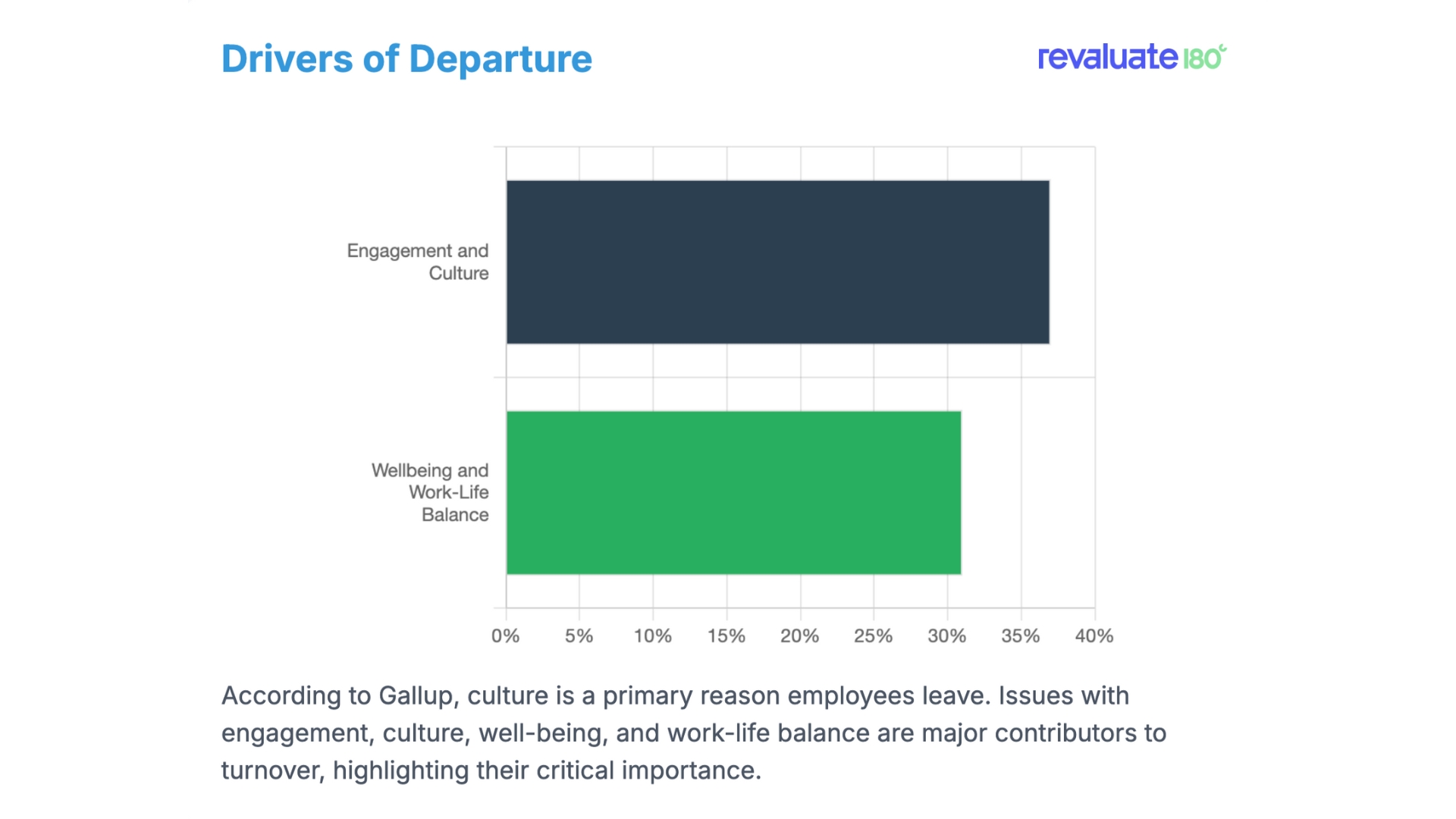
Additionally, tracking turnover rates and reasons for employee departure will help you identify the underlying causes of turnover spikes, as these metrics are also significant indicators of cultural issues. For example, if turnover spikes after the first year, it suggests that onboarding or setting expectations may need improvement.
4. Tracking Alignment Between Mission and Morale
This is another qualitative yet essential measure. Do your employees’ daily efforts reflect the company’s mission? You can measure this by adding mission-oriented questions to your surveys, such as, "Do you feel your work connects to our company’s purpose?"
For instance, if your company’s motto emphasizes customer-first service, but employees report policies that prioritize profits over genuine service, it erodes trust. This is where you plot mission alignment over time by combining scores on mission-related surveys and questions to give a higher-level view of your cultural coherence.
Building a Better Workplace Culture with Data-Driven Support
Cultural change is a complex process, but modern tools can make it more science than guesswork. Revaluate180 is a platform that combines a psychology-based assessment model with AI analytics to measure each individual's core motivations.
With this data-driven approach, organizations can personalize culture initiatives. Instead of an all-in-one program, we help you identify which teams crave more recognition, which employees are experiencing burnout, and which teams need more attention. By tracking key metrics such as engagement, turnover risk, and inclusivity scores over time, we identify early warning signs to act promptly and effectively. Contact us today and book your appointment.
Final Thoughts
Improving company culture is an ongoing journey rather than a one-off task. It requires commitment from the top, along with the willingness to listen, adapt, and innovate. As a well-deserved payoff, a thriving culture boosts productivity and trust among your employees.
By defining clear values and fostering the proper DEI practices, you can leverage your workplace data to inform your decisions and cultivate a positive culture that resonates throughout your organization.

Unlock AI-Powered Hiring Analytics
Transform the way you hire with insights that create aligned, collaborative, and high-performing teams.
 Smarter Hiring Decisions
Smarter Hiring Decisions
 Reduce Expensive Turnover
Reduce Expensive Turnover
 AI-Driven Insights
AI-Driven Insights
 Optimize Team Performance
Optimize Team Performance

FAQs
Why is company culture important?
A strong company culture can boost employee engagement, retention, productivity, and, most importantly, the business's financial performance.
How can you improve a company’s culture?
To improve a company’s culture, focus more on transparency, inclusivity, recognition, and aligning values with your employees after understanding their daily behaviour across the organization.
What are the 3 C’s of company culture?
The 3 C’s of company culture are Clarity, Communication, and Consistency.
How can you build a positive company culture?
To build a positive company culture, you must promote psychological safety, celebrate successes, encourage open feedback, and model leadership that aligns with your core values.
How can you fix a bad company culture?
To fix a bad company culture, you need to start identifying the root causes through honest feedback, practical data analysis, and addressing the hidden gaps in leadership through open communication and inclusivity.
How does teamwork improve company culture?
Collaboration is the only way, as it fosters trust, accountability, and a sense of belonging. These are the foundational values needed to build a healthy workplace culture.
